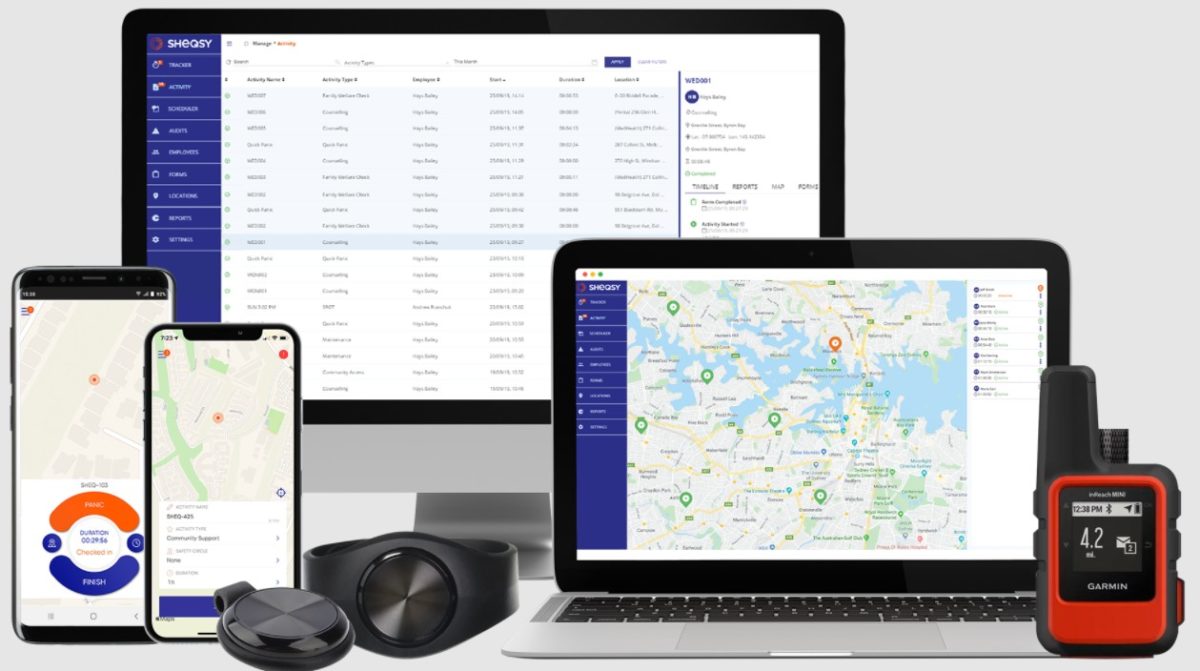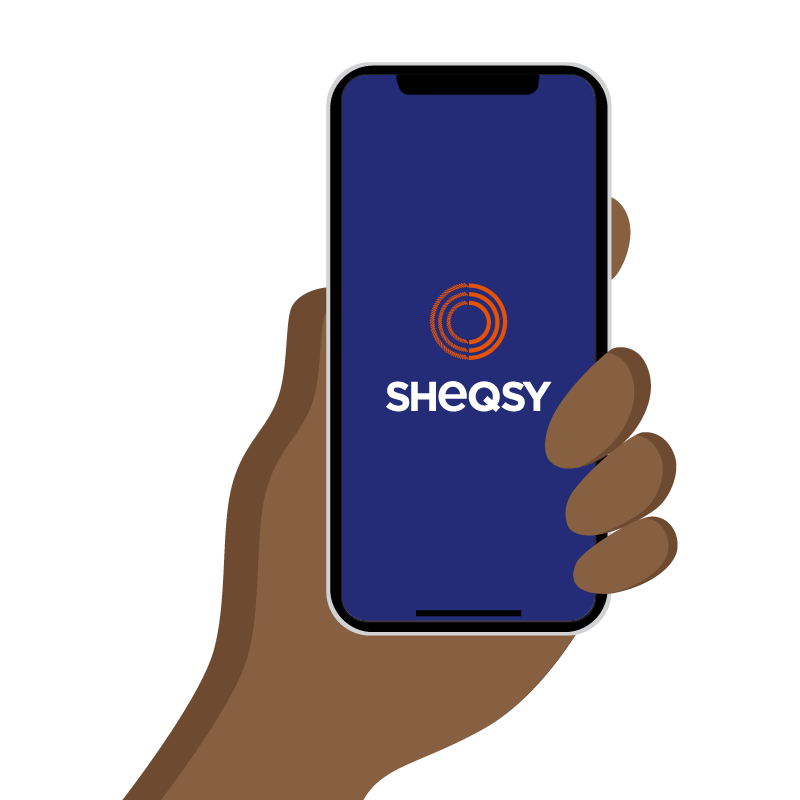As the number of lone workers continues to grow, it’s important to be aware of the best ways to keep them safe at all times. Deploying a lone worker app can help organizations effectively safeguard, monitor, and manage their lone workers in real-time. In this article, we will look at the best lone worker apps and devices on the market today.
Lone Worker Safety Apps
Organizations that employ lone workers have a moral and legal responsibility to keep them safe. They require an affordable solution that makes it easy to keep track of their lone workers while reducing liability, saving time, and increasing productivity.
Meanwhile, employees want to feel secure and confident at work. They need a familiar, user-friendly solution that seamlessly supports their everyday activities and provides emergency assistance when they need it.
The right lone worker smartphone app can meet each of these requirements.
Here are the 5 best lone worker apps and devices to keep your employees safe and connected.
BONUS! If you’re a company owner, freelancer, or have employees, build trust and maintain professionalism with DeskTime.
Top 5 Lone Worker Safety Apps
1. SHEQSY

SHEQSY is the leading, comprehensive lone worker safety and management solution. The Lone Worker Safety App keeps employees safe in real-time with innovative safety features (such as quick duress activation, periodic check-in, and overtime alerts) and integrates with a suite of lone worker devices to suit your requirements.
Organizations can easily manage, monitor, and report on employee activities via a central, user-friendly Dashboard. SHEQSY is available to lone-working teams worldwide.
Key Features
- iPhone/iOS & Android smartphone app
- Cloud-based management Dashboard
- “QuickPanic” and “Shake for Panic” duress alarm activation
- Real-time GPS location visualization
- Activity countdown timers
- Periodic check-ins and overtime alerts
- Man-down/fall detection
- Hazard and incident reporting, with images & videos
- Customized safe work forms and checklists
- Specific location notes to help pinpoint exact locations based on surroundings (ie within large buildings)
- Request emergency roll calls
- Integrated Bluetooth wearables & handheld satellite devices
- 24/7 professional monitoring and response center
- Navigation to appointments
- Calendar, scheduling, and reporting integrations
- Public APIs for integration with other platforms
Benefits
- All-in-one safety and management system
- Maintains employees’ personal privacy
- User-friendly
- Excellent customer support
- Fully customizable solution
- Intuitive and reliable
- Deployed within minutes
- Integration with Bluetooth wearables for man-down and fall detection
Pricing
- 30-day free trial
- Most affordable solution
- No upfront costs
- No long-term contracts
- Pay only for the employees you have added to the solution
- Training, onboarding, and support included
2. Peoplesafe
The Peoplesafe Pro App transforms any smart mobile device or tablet into a personal SOS alarm, protecting lone workers 24/7 at the touch of a button.
Key features
- SOS Alarm
- Multiple ways to engage an alert
- Fast GPS locating
- 24/7 monitoring
- Log activity timer
- Fall detection
- Welfare check
Pros
- Android & iOS
- Convenient and simple
- Integrates with SureCam dashcam
Pricing
- Must enquire about pricing
3. StaySafe
StaySafe helps employers quickly and easily locate workers in a duress situation and send immediate assistance. The StaySafe app and other solutions help keep lone workers safe anytime and monitor them as they work, travel, or meet with clients alone or in remote locations.
Key Features
- Timed sessions
- Panic button
- Discreet panic
- Low battery life warnings
- Cloud-based monitoring hub
- Integrated wearable technology and satellite devices
- 24/7 safety monitoring and response services
Benefits
- Easy to use and flexible
- Reliable
- Training, onboarding & support included
- High connectivity and coverage
Pricing
- Free trial
4. My Safety Buddy
With its smartphone app and web portal, My Safety Buddy helps organizations meet health and safety obligations to their remote, isolated, and lone-working staff. My Safety Buddy is configurable and scalable, helping all kinds of organizations across Australia.
Key Features
- Man down
- Duress alarm (panic alarm)
- 5-second check-in
- Routine welfare checks
- Journey monitoring
- GPS location updates
- Web portal
- 24/7 safety monitors
Benefits
- Simple to use
- Helps organizations meet their duty of care
Pricing
- No hidden fees
- No lock-in contracts
- Free trial
5. LONEALERT
LONEALERT provides a range of safety solutions on a variety of devices, including iPhone and Android. According to LONEALERT’s website, “The app is ideal for those that are on the go but are considered a low risk or infrequent lone worker.”
Key features
- GPS location sharing
- Employee privacy controls
- Panic alarm
- User reminders and prompts
- Desktop management portal
- Live viewing of maps, locations and geo-fencing
- Integrated Bluetooth Switch and satellite devices
- 24/7 Alarm Receiving Centre
Benefits
- Employee training
- Improves business efficiencies
- Real-time information and alerts
Pricing
- Free trial
Factors to Consider When Choosing a Lone Worker Solution
- Safety Policy: How well does the safety solution integrate with your safety policies and procedures? Does it enable and direct your team to follow the appropriate safety procedures at all times? Does it keep your organization compliant with government workplace health and safety requirements? How well does it monitor worker safety?
- Location Monitoring: In emergency and high-risk situations, can you easily locate your staff with GPS tracking in real-time?
- Integration: Can the lone worker system integrate with your existing and future infrastructure, such as the other digital platforms you use to manage and schedule employees, run reports, and manage risk? Does it integrate with other safety devices, such as handheld satellite devices or Bluetooth wearables?
- Ease of Use: Is the solution easy for employees to use, especially when they are in danger? Does it make health and safety managers’ jobs easier? Is it easy to deploy across your workforce?
- Operations Management: Does the solution simplify the management of your workers? Does it maximize the efficiency, productivity, and profit of your organization? Does it record important data used for reporting audits? Does it respect your employees’ personal privacy?
- Cost: Are a personalized demo and free trial include? How much does the solution cost, upfront and ongoing? Are there additional expenses for set-up, hardware, training, or support? Are long-term contracts required?
Best Lone Worker Solutions: Top 5 Lone Worker Apps & Devices
When it comes to choosing the best lone worker safety smartphone app, there are many factors to consider.
The app should be easy to use, reliable, and customizable for your specific needs. It should include features like periodic check-ins, overtime alerts, and quick, discreet duress activation.
Depending on your requirements, you may also need a system that integrates with other devices and offers 24/7 live monitoring.
We’ve highlighted the five top lone worker devices and apps on the market so you can make an informed decision.
1. What is a lone worker?
A lone worker is an individual who works by themselves or out in the community, typically without supervision or backup support. If there are other people nearby, but they cannot see or hear the employee, the employee is still considered a lone worker.
Examples of Lone Workers include:
- Elderly and special needs carers
- Delivery drivers
- Nurses and other medical workers
- Utility maintenance staff
- Nonprofit/charity outreach workers
- Construction workers
- Commercial cleaners
- Security guards
- Real estate agents
- Social workers
- Agriculture and forestry workers
- Repair staff
- Remote workers
- And many more…
2. What are the benefits of using a lone worker app?
Lone worker apps offer several benefits for both employers and employees that other systems (such as manual systems, phone calls, SMS messages, vehicle GPS tracking units, and standalone pendants) do not.
For employers, lone worker apps provide a way to manage, monitor, and protect employees in real-time. The best lone worker solutions include features such as location monitoring, automated check-ins, overtime alerts, quick duress activation, and incident reporting.
For employees, lone worker apps boost peace of mind and confidence, keeping them safe and connected to others as they work alone.
3. What are the features of the best lone worker safety apps?
The top lone worker safety app will include all of the following features:
- Real-time GPS location monitoring
- Periodic check-ins
- Automated missed check-in and overtime alerts
- Quick duress/lone worker alarm activation
- Fall detection and man-down alarms integrations
- Hazard, near-miss, and incident reporting
- Specific location notes to pinpoint employees’ exact locations (such as within a large building)
- Screening forms, checklists, and questionnaires
- Integration with other Bluetooth and satellite devices
- Unique escalation procedures
- Option for a 24/7 security monitoring center to escalate missed check-ins, overtime alerts, and duress alerts
The best solutions also include management features such as appointment and calendar scheduling.
4. What are some of the best lone worker safety devices?
In addition to smartphones, some of the best safety devices include Bluetooth wearables (such as V.ALRT), which enable users to activate duress quickly and discreetly. And for employees who work outside of mobile coverage, handheld satellite devices (such as Garmin inReach Mini and SPOT Gen4) keep employees safe with location monitoring, duress activation, and in some cases, messaging capability.
If your employees work in rural areas and/or in high-risk situations where discreet panic activation may be necessary, choose a lone worker system that integrates these devices.
5. Is lone working illegal?
Lone working is not illegal, but there are several laws and regulations that employers must adhere to when ensuring the safety of lone-working or remote workers. For example, Australian employers must “provide safe ways of working”, meanwhile the US Occupational Safety and Health Administration maintains that employers should “account for each employee . . . throughout each work shift at regular intervals . . . by sight or verbal communication” (1). In the UK, employers should have “systems in place to keep in touch with them and respond to any incident” (2).
The easiest and most efficient way to comply with health and safety requirements is to invest in a comprehensive lone-worker solution.
6. What is the best lone worker app?

SHEQSY is the best lone worker app (and overall platform) because it makes lone worker safety easy, keeps organizations compliant, and saves them time and money.
Innovative safety features such as QuickPanic, Shake for Panic, periodic check-ins, overtime alerts, and employee-enabled location monitoring keep staff safe at all times – even in low-signal areas. Meanwhile, management features such as calendar and scheduling integrations, hazard reporting, safety screening checklists/forms, location notes, navigation sharing, and real-time location viewing make management easy.
Integration with discreet Bluetooth wearables and handheld satellite devices, an optional 24/7 monitoring service, and fully customizable teams and escalation processes make the system flexible and scalable.
Simply put, there is not a safety app on the market that offers as many features or as much value for money. Of the five apps listed here, SHEQSY is the best overall lone worker app.
Resources:
- 1915.84 – Working alone., United States Department of Labor, Occupational Safety and Health Administration: https://www.osha.gov/laws-regs/regulations/standardnumber/1915/1915.84
- Protecting lone workers: How to manage the risks of working alone, Health and Safety Executive: https://www.hse.gov.uk/pubns/indg73.htm
 Sections of this topic
Sections of this topic
















